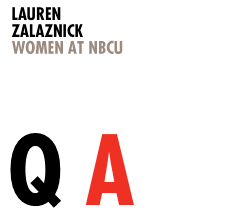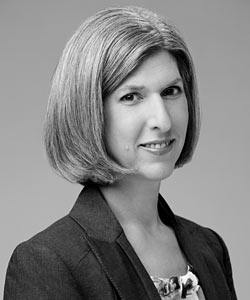Sponsors
Lauren Zalaznick is president of NBC Universal Women & Lifestyle Entertainment Networks, overseeing Bravo Media, Oxygen Media and iVillage. In addition, she launched and spearheads Women at NBCU, a highly successful sales marketing and research initiative designed to create custom solutions for advertisers seeking to connect with a targeted female demographic. She also founded and oversees NBCU’s pro-social initiatives, Green Is Universal and the recently established Healthy at NBCU, NBC Universal’s first company-wide health and wellness programs.

- Tell me about the roots of Women at NBCU -- what are some of the challenges your team faces in getting companies to recognize the value of advertising to women?
- With women now responsible for 85 percent of today’s consumer purchases, almost every marketer recognizes the “power of the purse.” To help our clients connect with this desirable audience, we launched Women at NBCU in May of 2008. This is a research- and insights-driven initiative that creates highly customized solutions for advertisers to connect with a precise female audience, on a massive scale, across NBCU properties such as TODAY, Oxygen, iVillage, Bravo and primetime shows like The Biggest Loser. The challenge today is that scale doesn’t always win. Our role is to help our partners understand that all women are not created equal, and that sheer demographics are not nearly as important as what “lifestage” they’re in, which is a truer predictor of their consumer behaviors. For instance, a woman can be a first-time mom at age 26 or 43. The young, trendy “Generation O” Mom watching Tori and Dean on Oxygen is very different from the Bravo Affluencer or the Eco-Mom chatting on iVillage message boards while watching TODAY. But, a single advertiser might very well need to reach each of these consumers. It’s critically important to know your precise audience target, and what her wants, needs and habits are.
- Your group recently unveiled the Women at NBCU Brand Power Index, which tracks the brands most important to women. When you look at the top 25 brands, it’s a wide mix of companies --carmakers, tech companies, banks, and superstores. Were you surprised by the list? Were others?
- The list actually confirms what we already know about today’s woman. A recent Women at NBCU study revealed 46% of women report being the breadwinner of their family. And while they have maintained their responsibilities as the “Chief Household Officer,” which demands their attention for healthcare, grocery and consumer products, women have also added new roles such as “Chief Financial Planner” and “Big Ticket Purchaser.” This means that women are increasingly responsible for purchases in categories traditionally considered male, like financial planning and technology. In fact, 8 out of 10 women say they are involved in the purchase decisions of automobiles and computers. So, it’s not surprising to see brands like Ford and Bank of America at the top of the Index.
- Your background is in TV and film -- what are you learning from engaging in the interactive conversation at iVillage?
- As the media landscape began to change as far back as the dawn of the consumer Internet age -- the '90s! -- I recognized the value of the digital space to any media business. Today, iVillage is a community of over 35 million women per month. Community is core to its attraction, with over 20 million actively chatting on safe, integral message boards all day long. The site serves as a living, breathing insights lab on what women are talking about in their lives, from family, to finances, to health issues. This is incredibly valuable information that helps shape our editorial decisions. Their conversations, in which we interact with them, also serve as a powerful conduit for data that is important to marketers seeking to reach influential female consumers. With over 20,000 brand mentions on the iVillage boards every month, this is an exciting time to witness first-hand that women can be the biggest brand ambassadors, as well as feel really good about what they’re doing for themselves, their families and their communities.
- Honestly, what is it like to sit and think all day long: “What do women want?”
- Honestly, I don’t! I do sit around and think all day long: “What do consumers want? What stories can we tell? What information can we bring them? What do my customers and clients want? What can my team do to entertain/inform/serve/excite/challenge them? What is a good idea in today’s busy media life?” It’s only when we break down the big audience segments through research and consumer insights that my businesses such as Bravo, Oxygen, or iVillage come alive. You never win by giving people what they want, anyway. You give them what you like, what you anticipate them liking without them having to ask for it, and then give them a little more than they ever expected— they’ll thank you for it in deep, unanticipated ways.

